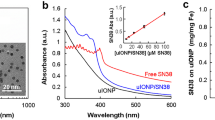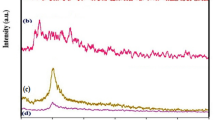Abstract
The objectives of this study are to enhance cellular accumulation of gemcitabine with chitosan/glyceryl monooleate (GMO) nanostructures, and to provide significant increase in cell death of human pancreatic cancer cells in vitro. The delivery system was prepared by a multiple emulsion solvent evaporation method. The nanostructure topography, size, and surface charge were determined by atomic force microscopy (AFM), and a zetameter. The cellular accumulation, cellular internalization and cytotoxicity of the nanostructures were evaluated by HPLC, confocal microscopy, or MTT assay in Mia PaCa-2 and BxPC-3 cells. The average particle diameter for 2% and 4% (w/w) drug loaded delivery system were 382.3 ± 28.6 nm, and 385.2 ± 16.1 nm, respectively with a surface charge of +21.94 ± 4.37 and +21.23 ± 1.46 mV. The MTT cytotoxicity dose-response studies revealed the placebo at/or below 1 mg/ml has no effect on MIA PaCa-2 or BxPC-3 cells. The delivery system demonstrated a significant decrease in the IC50 (3 to 4 log unit shift) in cell survival for gemcitabine nanostructures at 72 and 96 h post-treatment when compared with a solution of gemcitabine alone. The nanostructure reported here can be resuspended in an aqueous medium that demonstrate increased effective treatment compared with gemcitabine treatment alone in an in vitro model of human pancreatic cancer. The drug delivery system demonstrates capability to entrap both hydrophilic and hydrophobic compounds to potentially provide an effective treatment option in human pancreatic cancer.






Similar content being viewed by others
References
Jemal A et al. Cancer statistics, 2006. CA Cancer J Clin. 2006;56(2):106–30.
Freelove R, Walling AD. Pancreatic cancer: diagnosis and management. Am Fam Physician. 2006;73(3):485–92.
Hertel LW et al. Grindey Evaluation of the antitumor activity of gemcitabine (2′, 2′-difluoro-2′-deoxycytidine). Cancer Res. 1990;50(14):4417–22.
Plunkett W et al. Preclinical characteristics of gemcitabine. Anticancer Drugs. 1995;6 Suppl 6:7–13.
Burris HA et al. Improvements in survival and clinical benefit with gemcitabine as first-line therapy for patients with advanced pancreas cancer: a randomized trial. J Clin Oncol. 1997;15(6):2403–13.
Heinemann V et al. Comparison of the cellular pharmacokinetics and toxicity of 2′, 2′-difluorodeoxycytidine and 1-beta-d-arabinofuranosylcytosine. Cancer Res. 1988;48(14):4024–31.
Abbruzzese JL et al. A phase I clinical, plasma, and cellular pharmacology study of gemcitabine. J Clin Oncol. 1991;9(3):491–8.
Reid JM et al. Phase I trial and pharmacokinetics of gemcitabine in children with advanced solid tumors. J Clin Oncol. 2004;22(12):2445–51.
Moog R et al. Change in pharmacokinetic and pharmacodynamic behavior of gemcitabine in human tumor xenografts upon entrapment in vesicular phospholipid gels. Cancer Chemother Pharmacol. 2002;49(5):356–66.
Mackey JR et al. Functional nucleoside transporters are required for gemcitabine influx and manifestation of toxicity in cancer cell lines. Cancer Res. 1998;58(19):4349–57.
Pastor-Anglada M et al. Nucleoside transporters in chronic lymphocytic leukaemia. Leukemia. 2004;18(3):385–93.
Gourdeau H et al. Mechanisms of uptake and resistance to troxacitabine, a novel deoxycytidine nucleoside analogue, in human leukemic and solid tumor cell lines. Cancer Res. 2001;61(19):7217–24.
Yang J et al. Magnetic PECA nanoparticles as drug carriers for targeted delivery: synthesis and release characteristics. J Microencapsul. 2006;23(2):203–12.
Yang J et al. Preparation of poly epsilon-caprolactone nanoparticles containing magnetite for magnetic drug carrier. Int J Pharm. 2006;324(2):185–90.
Patra CR et al. Targeted delivery of gemcitabine to pancreatic adenocarcinoma using cetuximab as a targeting agent. Cancer Res. 2008;68(6):1970–8.
Gang J et al. Magnetic poly epsilon-caprolactone nanostructure containing Fe3O4 and gemcitabine enhance anti-tumor effect in pancreatic cancer xenograft mouse model. J Drug Target. 2007;15(6):445–53.
Stella B et al. Encapsulation of gemcitabine lipophilic derivatives into polycyanoacrylate nanospheres and nanocapsules. Int J Pharm. 2007;344(1–2):71–7.
Reddy LH, Couvreur P. Novel approaches to deliver gemcitabine to cancers. Curr Pharm Des. 2008;14(11):1124–37.
Huang LS et al. Preparation of gemcitabine polybutylcyanoacrylate nanoparticles. Nan Fang Yi Ke Da Xue Xue Bao. 2007;27(11):1653–6.
Galmarini CM et al. Polymeric nanogels containing the triphosphate form of cytotoxic nucleoside analogues show antitumor activity against breast and colorectal cancer cell lines. Mol Cancer The. 2008;7(10):3373–80.
Arias JL et al. Polymeric nanoparticulate system augmented the anticancer therapeutic efficacy of gemcitabine. J Drug Target. 2009;17(8):586–98.
Li Y et al. Up-regulation of miR-200 and let-7 by natural agents leads to the reversal of epithelial-to-mesenchymal transition in gemcitabine-resistant pancreatic cancer cells. Cancer Res. 2009;69(16):6704–12.
Bernkop-Schnurch A et al. Thiomers: preparation and in vitro evaluation of a mucoadhesive nanoparticulate drug delivery system. Int J Pharm. 2006;317(1):76–81.
Zheng F et al. Chitosan nanoparticle as gene therapy vector via gastrointestinal mucosa administration: results of an in vitro and in vivo study. Life Sci. 2007;80(4):388–96.
De Campos AM et al. Chitosan nanostructure: a new vehicle for the improvement of the delivery of drugs to the ocular surface. Application to cyclosporin A. Int J Pharm. 2001;224(1–2):159–68.
Sandri G et al. Nanostructure based on N-trimethylchitosan: evaluation of absorption properties using in vitro (Caco-2 cells) and ex vivo (excised rat jejunum) models. Eur J Pharm Biopharm. 2007;65(1):68–77.
Engstrom S. Drug delivery from cubic and other lipid-water phases. Lipid Technol. 1990;2:42–5.
Hyde ST et al. A cubic structure consisting of a lipid bilayer forming in infinite periodic minimum surface of the gyriod type in the glycerylmonooleate-water system. Z Krystallogar. 1984;168:213–9.
Trickler WJ et al. A novel nanoparticle formulation for sustained paclitaxel delivery. AAPS PharmSciTech. 2008;9(2):486–93.
Ganguly S, Dash AK. A novel in situ gel for sustained drug delivery and targeting. Int J Pharm. 2004;276(1–2):83–92.
Trickler WJ. The in vitro sub-cellular localization and in vivo efficacy of novel Chitosan/GMO nanostructures containing paclitaxel. Pharm Res. 2009;26(8):1963–73.
Jauhari S, Dash AK. A mucoadhesive in situ gel delivery system for paclitaxel. AAPS PharmSciTech. 2006;7(2):E53.
Sipos B et al. A comprehensive characterization of pancreatic ductal carcinoma cell lines: towards the establishment of an in vitro research platform. Virchows Arch. 2003;442(5):444–52.
Yonezawa S et al. Differential mucin gene expression in human pancreatic and colon cancer cells. Biochem J. 1991;276(Pt 3):599–605.
Takeuchi H et al. Novel mucoadhesion tests for polymers and polymer-coated particles to design optimal mucoadhesive drug delivery systems. Adv Drug Deliv Rev. 2005;57(11):1583–94.
Takeuchi H et al. Mucoadhesive nanoparticulate systems for peptide drug delivery. Adv Drug Deliv Rev. 2001;47(1):39–54.
Takeuchi H et al. Mucoadhesion of polymer-coated liposomes to rat intestine in vitro. Chem Pharm Bull (Tokyo). 1994;42(9):1954–6.
Takeuchi H et al. Enteral absorption of insulin in rats from mucoadhesive chitosan-coated liposomes. Pharm Res. 1996;13(6):896–901.
Howard KA et al. RNA interference in vitro and in vivo using a novel chitosan/siRNA nanoparticle system. Mol Ther. 2006;14(4):476–84.
Shikata F et al. In vitro cellular accumulation of gadolinium incorporated into chitosan nanostructure designed for neutron-capture therapy of cancer. Eur J Pharm Biopharm. 2002;53(1):57–63.
Takeuchi H et al. Effectiveness of submicron-sized, chitosan-coated liposomes in oral administration of peptide drugs. Int J Pharm. 2005;303(1–2):160–70.
Achanta G et al. Interaction of p53 and DNA-PK in response to nucleoside analogues: potential role as a sensor complex for DNA damage. Cancer Res. 2001;61(24):8723–9.
Gerweck LE. Tumor pH: implications for treatment and novel drug design. Semin Radiat Oncol. 1998;8(3):176–82.
Burke T et al. Interaction of 2′, 2′-difluorodeoxycytidine (gemcitabine) and formycin B with the Na+-dependent and -independent nucleoside transporters of Ehrlich ascites tumor cells. J Pharmacol Exp Ther. 1998;286(3):1333–40.
Hammond JR et al. [3H]gemcitabine uptake by nucleoside transporters in a human head and neck squamous carcinoma cell line. J Pharmacol Exp Ther. 1999;288(3):1185–91.
Bergman AM et al. Increased sensitivity to gemcitabine of P-glycoprotein and multidrug resistance-associated protein-overexpressing human cancer cell lines. Br J Cancer. 2003;88(12):1963–70.
Yao J et al. The mechanism of resistance to 2′, 2′-difluorodeoxycytidine (gemcitabine) in a pancreatic cancer cell line. Zhonghua Zhong Liu Za Zhi. 2005;27(12):721–6.
Rejman J et al. Size-dependent internalization of particles via the pathways of clathrin- and caveolae-mediated endocytosis. Biochem J. 2004;377(Pt 1):159–69.
Panyam J et al. Rapid endo-lysosomal escape of poly(dl-lactide-co-glycolide) nanostructure: implications for drug and gene delivery. Faseb J. 2002;16(10):1217–26.
Chavanpatil MD et al. Nanostructure for cellular drug delivery: mechanisms and factors influencing delivery. J Nanosci Nanotechnol. 2006;6(9–10):2651–63.
Nafee N et al. Chitosan-coated PLGA nanostructure for DNA/RNA delivery: effect of the formulation parameters on complexation and transfection of antisense oligonucleotides. Nanomedicine. 2007;3(3):173–83.
Acknowledgements
These studies were supported in part by a Department of Defense Concept Award BC045664 and Health Future Foundation Grant, Creighton University, Omaha, NE.
Author information
Authors and Affiliations
Corresponding author
Rights and permissions
About this article
Cite this article
Trickler, W.J., Khurana, J., Nagvekar, A.A. et al. Chitosan and Glyceryl Monooleate Nanostructures Containing Gemcitabine: Potential Delivery System for Pancreatic Cancer Treatment. AAPS PharmSciTech 11, 392–401 (2010). https://doi.org/10.1208/s12249-010-9393-0
Received:
Accepted:
Published:
Issue Date:
DOI: https://doi.org/10.1208/s12249-010-9393-0




